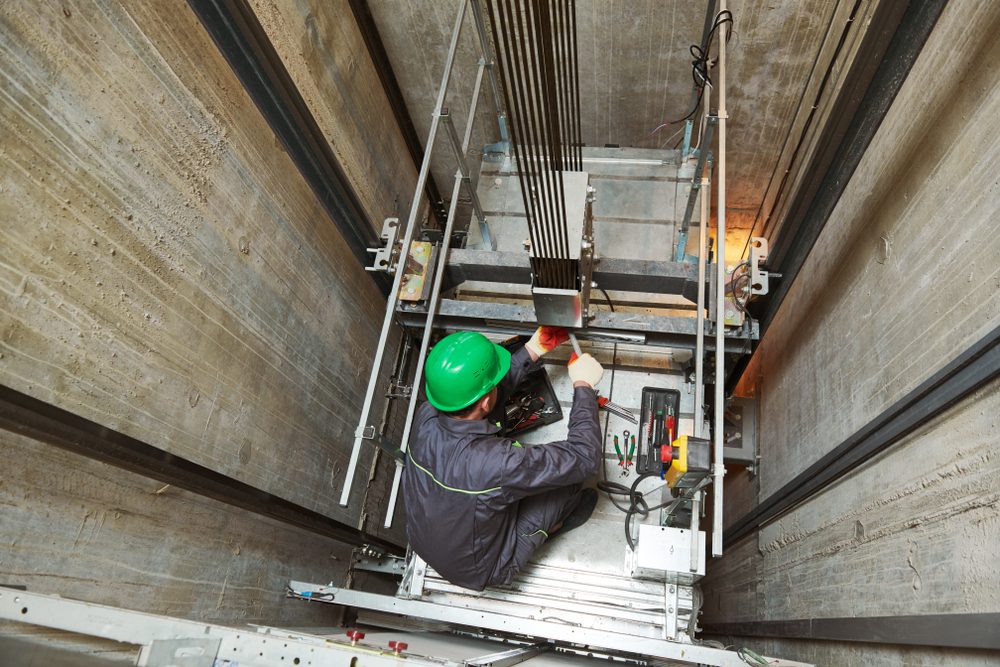We’ve all heard horror stories of a malfunction causing an elevator to plunge into freefall like the Tower of Terror ride at Disney World. An incident supposedly like this occurred in November 2018 at Chicago’s fourth-tallest building. Six people were reportedly stuck after the elevator at the former John Hancock Center in Chicago “plunged” from the 95th floor to the lobby on the 11th floor.
There have also been reports of people dying due to the elevator rapidly shooting upwards numerous stories in the shaft as a result of cables breaking and the counterweight malfunctioning.
How many elevator accidents are there per year?
Rest assured, it’s unbelievably rare for an elevator to break in this way.
Countless elevator hops are made every day around the globe and fatal incidences are relatively low. Given the number of people who travel in these contraptions daily, they can be considered one of the safer modes of transport.
Accidents involving elevators, as well as escalators, kill around 30 and seriously injure about 17,000 people each year in the US, according to data cited by the Centers for Disease Control and Prevention (CDC). Just under half of those deaths involve people working on the machines getting stuck in between moving parts or down the shaft.
Incidents where the elevator cables snap and the carriage dramatically falls or shoots upwards are practically undocumented in recent years, according to official statistics from the US.

Around half of elevator deaths occur when engineers are servicing them. Image credit: Dmitry Kalinovsky/Shutterstock.com
What happens if an elevator cable breaks?
One of the main reasons behind the relative safety of elevators is that they rely on a number of steel cables, often between four and eight. If one fails, the others will still be able to hold the elevator. These cables are designed to sustain the weight of several fully packed cars, so the risk of the cables snapping due to a heavily loaded car alone is very unlikely.
Even if multiple cables snap in a freak incident, elevators are fitted with layers of further precautions that can protect travelers.
Many of these are credited to the godfather of modern elevators, Elisha Otis, an American industrialist who developed a safety device in the 19th century that prevents elevators from falling if the hoisting cable fails. If you look around in most modern elevators, you’ll notice many of them are still made by OTIS, the company founded by Elisha.
First is an electronic brake, as per Washington Post. In many modern lift designs, sensors can detect that the car is speeding downward and it can eject a metal brake from underneath the elevator car that slots into guide rails running down the shift.
If there’s a power cut, an electronic-released brake can spring into action. Many elevators feature a clamp that has a resting position closed tightly on the pulley above the car. Cleverly, this type of brake is always clamped down unless power is supplied to release it, meaning it will mechanically put brakes on the pulley in the absence of electricity.

Modern elevators come in many shapes and sizes, but most follow the same safety precautions. Image credit: Pressmaster/Shutterstock.com
On top of the brakes, then there are counterweights that are attached to the opposite ends of the cables hooked up to the car. These counterweights are generally slightly heavier than an empty car and slightly lighter than a full car. Even in the absence of any braking system, this counterweight should assure that the car will gently ascend if it’s empty or not full, while gently descending if the car is full.
Hydraulic shock absorbs are often placed at the top and bottom of the shaft to help make this rise or fall slightly gentler too.
Despite all of these layers of safety, accidents evidently can happen. However, it appears that most of these accidents are the result of human error and tampering, rather than a purely mechanical fault with the elevator.
As for the 2018 incident in Chicago, it’s clear that many of the safety precautions did fall into place. That’s why the six people in the falling elevator car managed to descend 84 stories without sustaining serious injuries. If the car did free-fall this distance, then it would be almost certain that anyone inside would not have made it out alive.
According to an investigation into the incident, just one of the elevator’s seven cables reportedly broke. The fall, it concluded, was actually a “gradual lowering” followed by a “controlled stop a few floors below.” Media reports that the car “plunged” 84 floors were overstated and misleading, it added.
Source Link: What Happens If An Elevator Cable Breaks?